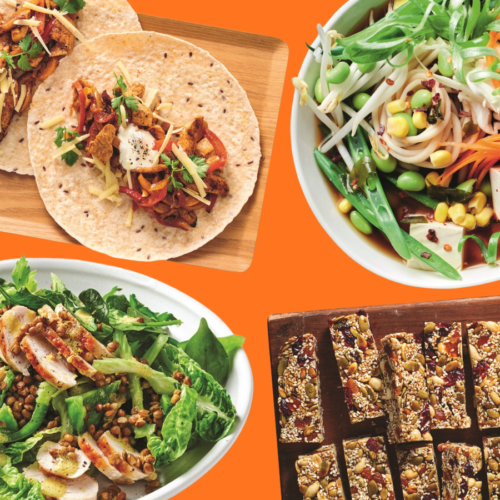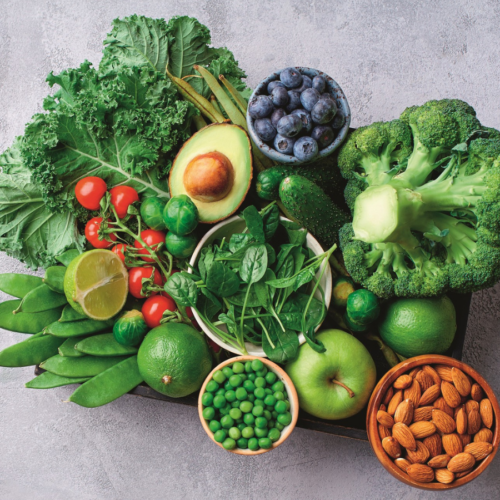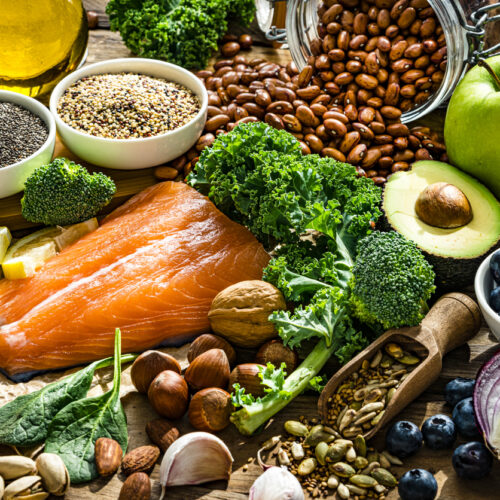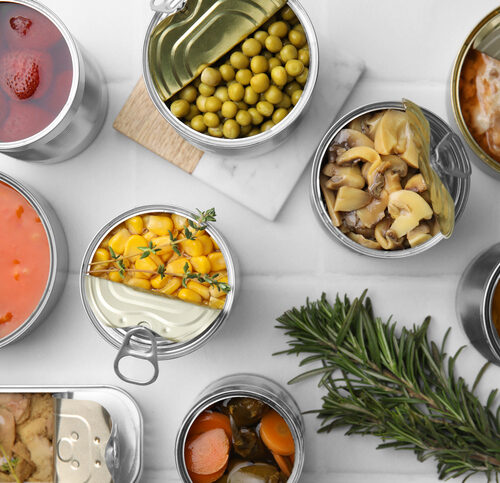
We often hear that different diets around the world are better or even ‘best’ for good health. HFG nutritionist Claire Turnbull looks at some of the world’s healthiest diets and what we can learn — good and bad — from them.
Japan
Japan has one of the highest life expectancy rates in the world and some of the lowest rates of overweight and obesity in developed countries (and at a cosmetic level, Japanese people often appear very youthful!). The traditional Japanese diet and the way the Japanese eat are likely to be big contributors to these impressive health statistics.
Staple foods in a traditional Japanese diet
Rice: The Japanese get through over seven million tonnes of rice a year.
Fresh noodles: Mainly soba, udon and ramen.
Fish and seafood: The Japanese take great pride in their seafood. They eat a variety of fish, squid, octopus, eel and shellfish, which all appear in a range of dishes from sushi to tempura. The Japanese consume on average 56kg fish and shellfish each year — more than twice the 26kg consumed on average by New Zealanders.
Soy products: Tofu, soy beans and other fermented soy products. Tofu comes in a variety of types and textures in Japan.
Green tea: Hot and cold.
How they eat
Japanese people have a great respect for food: they take time to sit down and enjoy food. You don’t see people eating while walking (this is considered rude) or snacking endlessly. The portion sizes of food are modest, and food is served on smaller-sized plates (compared to plate sizes in New Zealand).
At sporting events such as baseball games, even though they have hot chips and hot dogs, big bowls of healthy soups with vegetables and noodles and sushi boxes are also available — so you can even eat well when you are at a game.
In Japanese schools you won’t see hot chips or chocolate milk drinks. Most primary schools in Japan have a nutritionist to advise the school and many schools will not allow children to bring anything from home other than water. A typical school lunch may be plain rice or noodles, some freshly cooked meat or fish, stir-fried vegetables and a hot broth with a carton of milk.
Not-so-good things
The Japanese have very high sodium intakes because they use a lot of salt-laden sauces. This is part of the reason for the high incidence of stroke among Japanese people. There has been a reduction in salt consumption in Japan in recent years, however, as public health campaigns focus on salt consumption.
While data (from 2009) shows Japan boasted one of the lowest obesity rates in the OECD, the influence of the modern Western diet — including the presence of Western-style fast food outlets — is making its presence felt (especially among the younger population), and potentially affecting the positive aspects of Japan’s traditional food culture.
Lessons we can learn
- It pays to start early with healthy eating. Food education in Japan starts in preschool.
- Avoid eating on the run. Sit down and enjoy your food.
- Serve smaller portions.
- Drink more green tea rather than coffee.
- Enjoy more fish-based meals.
- Have vegetables with every meal — and yes, that can even mean breakfast!
- Watch the sodium content of Japanese dishes and sauces: one teaspoon of soy sauce has around 300mg sodium (12 per cent of the recommended daily upper limit).
- Get as much incidental exercise as possible.
Did you know?
The Japanese are very interested in gut health and eat a lot of fermented foods. Fermented milk drinks containing probiotics (such as Yakult) are widely consumed. Ongoing research continues in Japan and worldwide to further investigate the impact probiotics have on health and well-being.
Scandanavia
Denmark, Norway and Sweden make up the Scandinavian region. The Scandanavian rates of overweight and obesity are considerably less than the obesity rates in New Zealand: in 2009, around 10 to 13 per cent of Scandanavian adults were overweight or obese compared to around 27 per cent in New Zealand at that time.
Staple foods in a traditional Scandinavian diet
Fish and seafood: The Scandinavians enjoy a wide variety of seafood including a range of different fish, crayfish, lobster, prawns and oysters. Much of the fish they enjoy is fresh but they also smoke and cure their fish, too.
Fruit and vegetables: The colder climate in Scandinavia affects which fruit and vegetables they are able to grow. The Scandinavians enjoy lots of berries when they are in season and in the winter months they stock up on cabbage, kale, sprouts, potatoes, onions and apples.
Dairy products: Milk, butter milk, sour cream and cheese are big news in much of Scandinavia with each country producing its own unique type of cheese.
Dense grainy bread: The type of bread traditionally eaten in Scandinavia is far less heavily processed than much of the bread in New Zealand. It is often dark brown and made from rye.
Canola (rapeseed) oil: This oil is commonly used in much of Scandinavia.
How they eat
Traditionally, the Scandinavians cooked from scratch at home. This is still common practice, although many younger people are now moving away from this.
In Scandinavia, people traditionally enjoy three meals a day and possibly a coffee break but they aren’t generally inclined to snack all day long. When they enjoy sweet treats, they are in small servings.
Markets are a popular way of shopping in much of Scandinavia.
Not-so-good things
Historically, preserving foods by salting, curing and drying was very important to the Scandinavians to allow them to manage their food supply over the year. As a result of this, the traditional diet is very high in sodium and as a consequence there are high incidences of high blood pressure and stomach cancer.
Some Scandinavians also have a high intake of saturated fat from full-fat varieties of milk, cheese, butter and sour cream. This can affect health and if combined with the trend of eating more than needed will contribute to obesity.
Lessons we can learn
- Go for dense grainy breads and less heavily processed grains.
- Include lots of dark-green leafy vegetables.
- Keep sweet treats small.
- As with Japan, enjoy more seafood dishes.
- Enjoy healthy, home-cooked family meals as often as you can.
- Avoid mindlessly snacking — sit down and enjoy your food at mealtimes.
Greece
The ‘Mediterranean-style’ diet has been researched as an example of a diet with positive effects on health. This way of eating is inspired by traditional dietary patterns of Spain, Portugal, parts of Italy and France but is mostly heavily influenced by Greece. Unfortunately, much of the Greek population has moved away from their traditional way of eating and their health statistics reflect this. While adult overweight and obesity rates are lower than ours, on a global scale Greek children are among the fattest.
Staple foods in a traditional Greek diet
Fresh fruit and vegetables: The Greeks enjoy lots of different vegetable dishes and salads.
Pulses: Chickpeas, split peas and lentils are everyday staples.
Fish, seafood and poultry: Traditionally, these are more commonly eaten than meat.
Wheat: Bulgar wheat is commonly enjoyed, as are breads made from wholegrain wheat.
Extra-virgin olive oil: Served with almost everything.
Nuts and seeds: Almonds, walnuts and sesame seeds are popular in both savoury and sweet dishes.
Fresh herbs: Parsley, oregano, dill, coriander and mint.
How they eat
Mealtimes play an important part in Greek culture as the sharing of food is a time for family and friends to enjoy each other’s company. The Greeks savour their food and are proud of their cuisine. Traditionally, everything is prepared from scratch and what they choose to cook will be based on what is in season and available at the market that day.
Not-so-good things
When you order a Greek salad in Greece it is likely to come with a substantial serve of feta cheese, and when Greeks use dairy products, these are traditionally high-fat varieties.
The Greeks can be liberal with oil, too, and excessive amounts contribute to weight gain.
The meat used in Greek cooking can be quite fatty, which means a high saturated fat intake.
When we think Mediterranean diet, the emphasis is on the traditional not modern-day diets.
Lessons we can learn
- While good quality extra-virgin olive oil is great for our health, you really can have too much of a good thing. When you are using oil, add teaspoons, not tablespoons.
- Have salad and vegetables with every meal, and the fresher the produce the better. If you don’t already, try growing your own! In Greece, salads or vegetables are often served first so you could try that at home. You might end up eating a smaller portion of the rest of your meal.
- Eat more fish!
- Eat more slowly. Savour your food, turn off the TV, eat without distractions and enjoy every mouthful.
- Add more herbs to add flavour without salt.
The bottom line
When it comes to modelling our own eating patterns on diets from around the world, it pays to remember there is really no such thing as a ‘perfect diet’. There are many ways to eat to optimise our health. The countries we have looked at here all have good and bad aspects to their traditional diets — it’s the good things we can learn from and incorporate into the way we eat.
www.healthyfood.com










